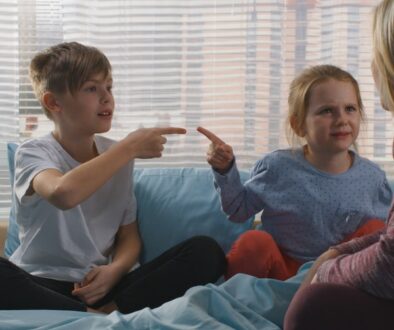Supporting Kids Through Nonverbal Communication
It’s not what they said, it was how they said it.
As humans, our brains are wired to see certain nonverbal cues as signs of either safety or threat. You might notice yourself feeling some stress if someone spoke in a condescending tone with you, even if the words they used seemed harmless. In those cases, we interpret an underlying meaning according to nonverbal cues. These cues include tone of voice, presence, facial expression, pacing, posture, and voice volume.

The way we connect with others, especially with kids, is more about nonverbal communication than we may realize. In supporting a child who is upset, angry, or worried, the way we say things appears to be as important as what we say. Children need supportive adults, especially their parents, to provide nonverbal cues of safety to feel calmer, more confident, and loved. We are always picking up cues from others to assess our level of safety or threat, and kids especially pay attention to these cues because of their reliance on adults.
Relational safety cues can be a powerful tool for parents to support healthy development for children. The following is a checklist to support you in providing safety cues when your child is dysregulated, as adapted from Beyond Behaviors by Dr. Mona Delahooke.
- Presence: am I present with my child, attending to them individually, and not distracted or multitasking?
- Tone: Is there warmth and a caring tone to my voice?
- Volume: Is the volume of my voice appropriate to my child’s current needs?
- Facial expression: Is my face expressive of safety and engagement? More specifically, are my eyes, upper face, and forehead relaxed? Am I making eye contact with my child?
- Breathing: Is my breathing slow, deep, and calm?
- Pacing and timing: Am I approaching and pacing with my child in accordance with their immediate needs?
- Posture: Do I have a relaxed posture and inviting gestures?
These are seven items to consider in modeling safety and healthy emotion regulation. Kids can actually feel the difference when our nonverbal cues convey compassion. However, it can be challenging for us to stay fully present and warm; it is natural for us to become dysregulated ourselves. We may not be able to be regulated all of the time when interacting with our kids, but we can be more mindful of messages that are being communicated to kids through nonverbal communication. Remember to take breaks to regulate and process difficult moments with trusted peers away from your child. If you and your child would like further support, it may be helpful to reach out to a therapist.




